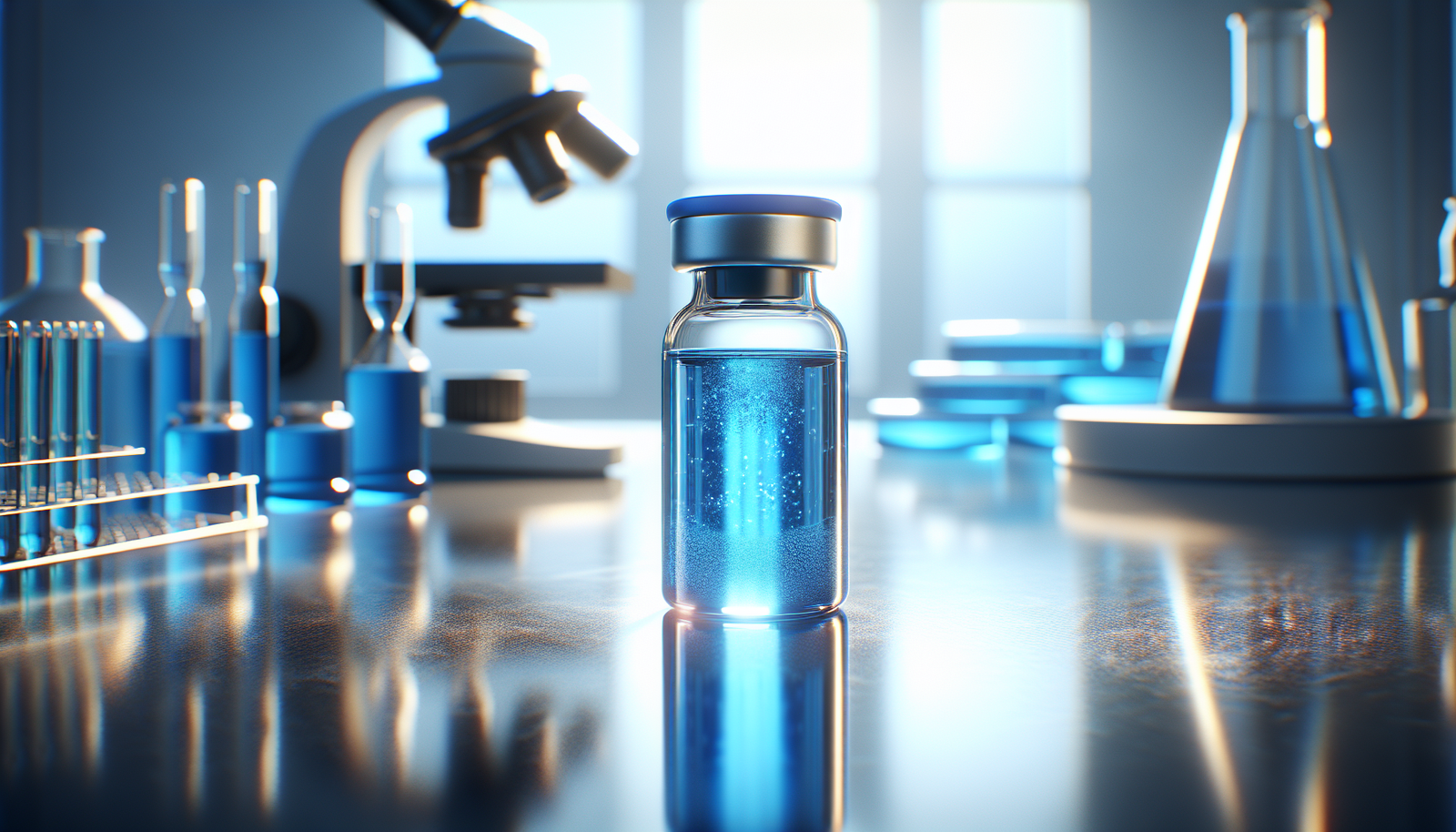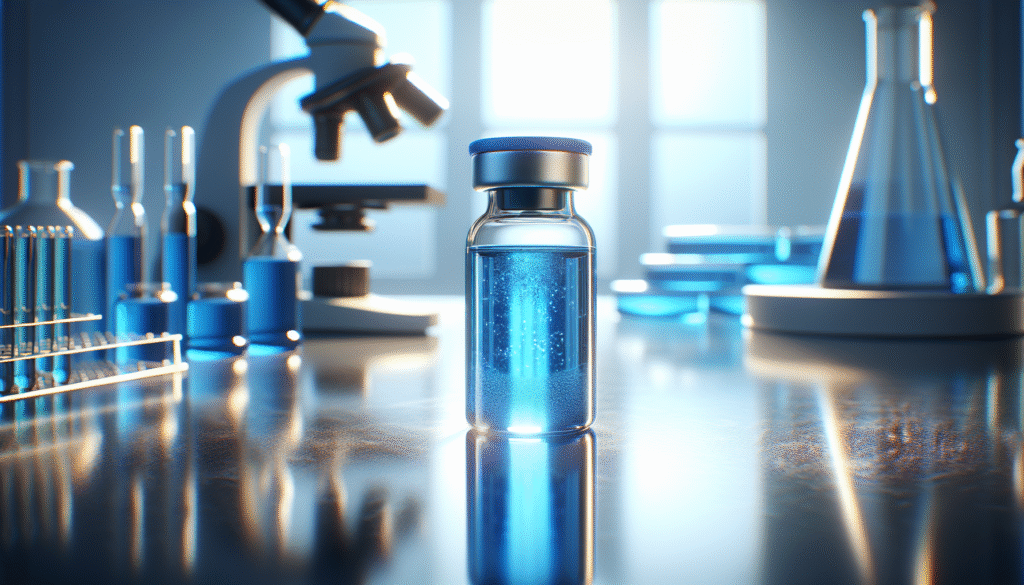
Have you ever considered how a single compound can serve multiple roles in medicine, particularly as a diagnostic tool? Methylene blue, known for its vibrant blue color and extensive medical applications, offers intriguing insights into various biological processes. This article examines its diagnostic capabilities, underlying mechanisms, and practical applications.

Understanding Methylene Blue
Methylene blue is a synthetic dye that has been employed in various fields, ranging from biology to textiles. Its chemical structure consists of a phenothiazine derivative, which endows it with unique properties that enable it to interact with biological systems effectively.
Chemical Structure and Properties
The molecular formula of methylene blue is C16H18ClN3S, indicating a complex structure that contributes to its various functionalities. Its absorption spectrum aligns well with the visible light range, making it easy to detect even in low concentrations. This property is paramount when utilizing methylene blue in diagnostic settings.
Historical Context
Historically, methylene blue was first synthesized in the 19th century and quickly garnered attention for its application in staining biological tissues. Over time, researchers discovered its potential as a therapeutic agent, particularly in treating methemoglobinemia, a condition where hemoglobin is altered, impairing its ability to carry oxygen.
Mechanism of Action
A deeper understanding of how methylene blue operates reveals its role in oxidative and reductive processes. At the core lies its ability to act as an electron donor, leading to various biochemical interactions.
Reduction and Oxidation Dynamics
When methylene blue enters a biological system, it undergoes reduction to form leucomethylene blue. This transformation allows it to participate in redox (reduction-oxidation) reactions, facilitating electron transfer in vital processes. Such dynamics are particularly relevant in diagnosing conditions involving oxidative stress and metabolic dysfunction.
Role in Oxygen Transport
Moreover, methylene blue can influence the affinity of hemoglobin for oxygen. By modulating this interaction, it serves as a valuable tool in assessing oxygenation levels in patients with respiratory conditions. Understanding this mechanism can significantly enhance your ability to interpret diagnostic results accurately.
Diagnostic Applications
The versatility of methylene blue extends to several diagnostic applications. Its efficacy has been highlighted in areas such as microbiology, toxicology, and surgery.
Microbiological Diagnostics
One of the primary applications of methylene blue is its use as a staining agent in microbiology. When applied to bacterial cultures, it enhances visibility, enabling easier identification of microbial species. Understanding this application can assist you in utilizing methylene blue effectively during laboratory processes.
Table 1: Applications of Methylene Blue in Microbiology
| Application | Description |
|---|---|
| Staining Bacteria | Enhances visibility of bacterial structures under microscopy |
| Assessing Viability | Differentiates living from non-living cells through color change |
| Identifying Pathogens | Used in various assays for pathogen detection |
Toxicological Assessments
Methylene blue is also frequently used in toxicological assessments. It helps detect the presence of heavy metals and toxic compounds in biological samples. The ability to bind to toxic agents makes it invaluable in various diagnostic tests.
Intraoperative Uses
In surgical procedures, methylene blue can serve as a dye to trace anatomical structures. By injecting the dye, surgeons can visually confirm the pathway of blood vessels or the anatomy of organs, substantially increasing procedural accuracy. This application underscores methylene blue’s role in clinical environments, enhancing patient safety and surgical outcomes.
Benefits and Limitations
While methylene blue presents numerous advantages as a diagnostic tool, it is crucial to understand its limitations as well.
Advantages
- Cost-Effectiveness: The low cost of methylene blue makes it accessible for widespread use in diagnostic settings.
- Stability: Its stability under various conditions allows for reliable results across different applications.
- Versatility: The compound’s ability to function in various diagnostic contexts highlights its adaptability.
Limitations
- Potential Toxicity: Although generally safe, methylene blue can be toxic in high concentrations, necessitating caution when used in diagnostics.
- Allergic Reactions: Some individuals may experience allergic reactions, which underscores the importance of thorough patient assessments before administration.
- Interference with Diagnostic Tests: Methylene blue can interfere with certain laboratory tests, leading to inaccurate results if not accounted for.

Case Studies
Examining case studies can provide invaluable insights into the practical applications of methylene blue in diagnostic settings. These real-world examples illustrate its effectiveness and potential pitfalls.
Case Study 1: Methylene Blue in Methemoglobinemia
A notable case involved a patient diagnosed with severe methemoglobinemia, resulting from exposure to certain drugs. Administering methylene blue effectively reduced methemoglobin levels, restoring normal oxygen transport. This case underscores the compound’s utility in critical care.
Case Study 2: Microbial Infection Diagnosis
In another instance, methylene blue was employed to differentiate between Gram-positive and Gram-negative bacteria in a clinical microbiology lab. The staining allowed microbiologists to quickly identify infections and adjust treatment accordingly, showcasing the importance of this compound in clinical diagnostics.
Future Prospects
The ongoing research into methylene blue promises exciting developments in its diagnostic applications. Advances in nanotechnology may lead to novel delivery methods that enhance its efficacy. Moreover, integrating methylene blue with other diagnostic techniques could yield synergistic effects, increasing diagnostic accuracy.
Potential Research Directions
- Combined Therapies: Investigating the potential of methylene blue alongside other pharmacological agents for enhanced diagnostic outcomes.
- Nanoformulations: Developing nanoparticles that incorporate methylene blue for targeted delivery to specific tissues or cells may improve diagnostic precision.
- Biomarker Discovery: Exploring methylene blue’s interactions within biological systems could uncover new biomarkers for various diseases.
Ethical Considerations
As with any diagnostic tool, using methylene blue requires ethical considerations. Adherence to regulations, informed consent, and proper patient management are paramount. Understanding these aspects ensures that you can utilize methylene blue responsibly and effectively.
Conclusion
Methylene blue is a multifaceted diagnostic tool with a rich history and promising future. By understanding its mechanisms, applications, benefits, and limitations, you can better appreciate its contributions to medicine. Continued research and innovation will undoubtedly expand the horizons of methylene blue’s diagnostic applications, reaffirming its value in modern healthcare.
Your ability to leverage this knowledge will enhance your clinical practice, ultimately leading to improved patient care outcomes.